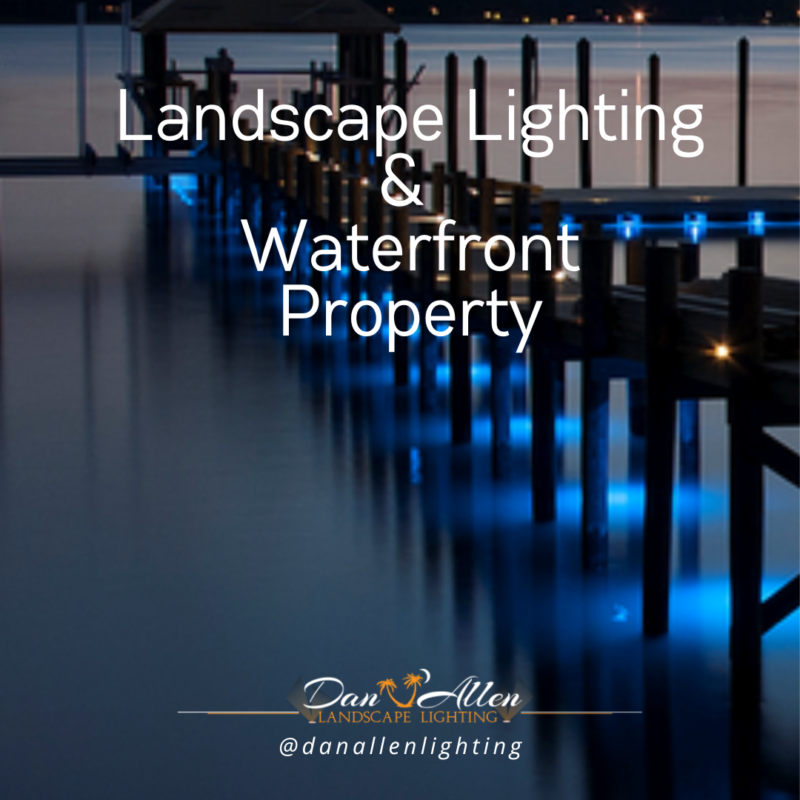Landscape lighting for waterfront properties is an important aspect of design, aesthetics, safety, and security. Research and expert opinions often highlight several key aspects when it comes to illuminating waterfront areas:
Aesthetics and Ambiance:
Properly designed landscape lighting can enhance the aesthetics of a waterfront property, creating a visually appealing atmosphere. Lighting techniques like uplighting, moonlighting, and path lighting can accentuate the beauty of the landscape, water features, and architectural elements.
Safety and Security:
Lighting along paths, docks, stairways, and other critical areas improves safety by reducing the risk of accidents and falls. Adequate lighting also deters potential intruders, enhancing the security of the property.
Preservation of Natural Environment:
Research emphasizes the importance of using lighting fixtures that minimize light pollution and its impact on the natural environment, particularly in waterfront areas. Shielded fixtures, low-intensity lighting, and warm color temperatures are recommended to reduce adverse effects on wildlife and aquatic ecosystems.
Guidance and Wayfinding:
Lighting can be strategically placed to guide residents and visitors, especially in areas with complex layouts or terrain. Well-placed lights can aid in wayfinding and improve overall accessibility.
Energy Efficiency and Sustainability:
Research advocates for the use of energy-efficient lighting technologies, such as LED lights, solar-powered lights, and timers or motion sensors to control lighting. This approach promotes sustainability and reduces energy consumption and associated costs.
Compliance with Regulations:
Compliance with local regulations regarding waterfront lighting is crucial. Many areas have specific guidelines to preserve the natural beauty of waterfronts and protect wildlife. Research often highlights the necessity of adhering to these regulations in lighting design.
Balancing Lighting Levels:
Research suggests a balanced approach to lighting, avoiding excessive brightness or glare. This balance ensures that the lighting is effective while maintaining the beauty and tranquility of the waterfront environment.
Seasonal Considerations:
Taking into account seasonal changes in daylight hours and weather conditions is important in planning landscape lighting. Adjustable lighting systems or those that adapt to varying conditions can be particularly beneficial.
User Preferences and Needs:
Understanding the preferences and needs of residents and users is crucial in determining the appropriate type and placement of lighting. Tailoring the lighting design to meet specific lifestyle requirements contributes to the overall satisfaction of residents.
Research emphasizes the importance of landscape lighting for waterfront properties in enhancing aesthetics, safety, security, and sustainability. It also stresses the need for thoughtful design, compliance with regulations, and consideration of the natural environment to create a well-balanced lighting solution.


